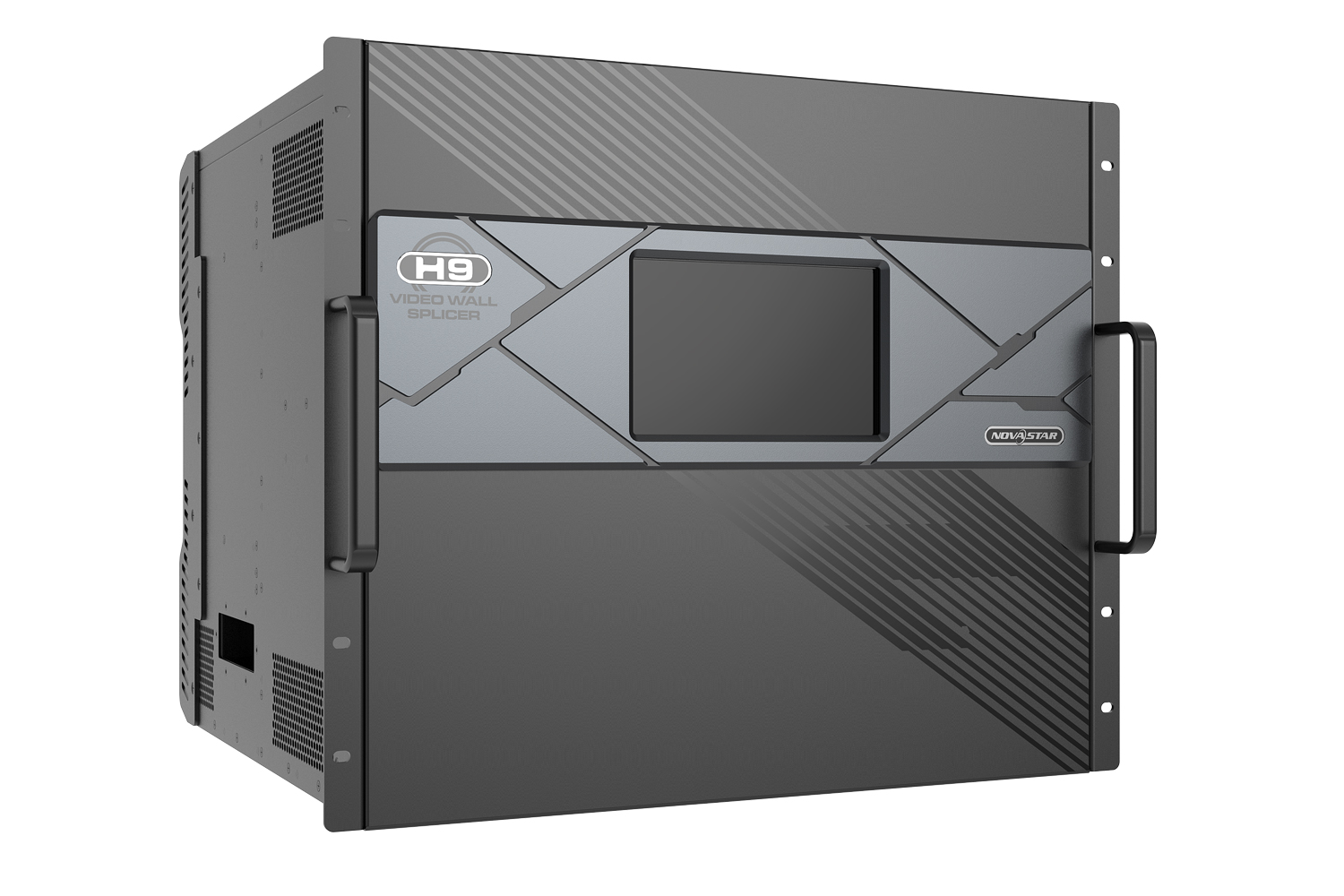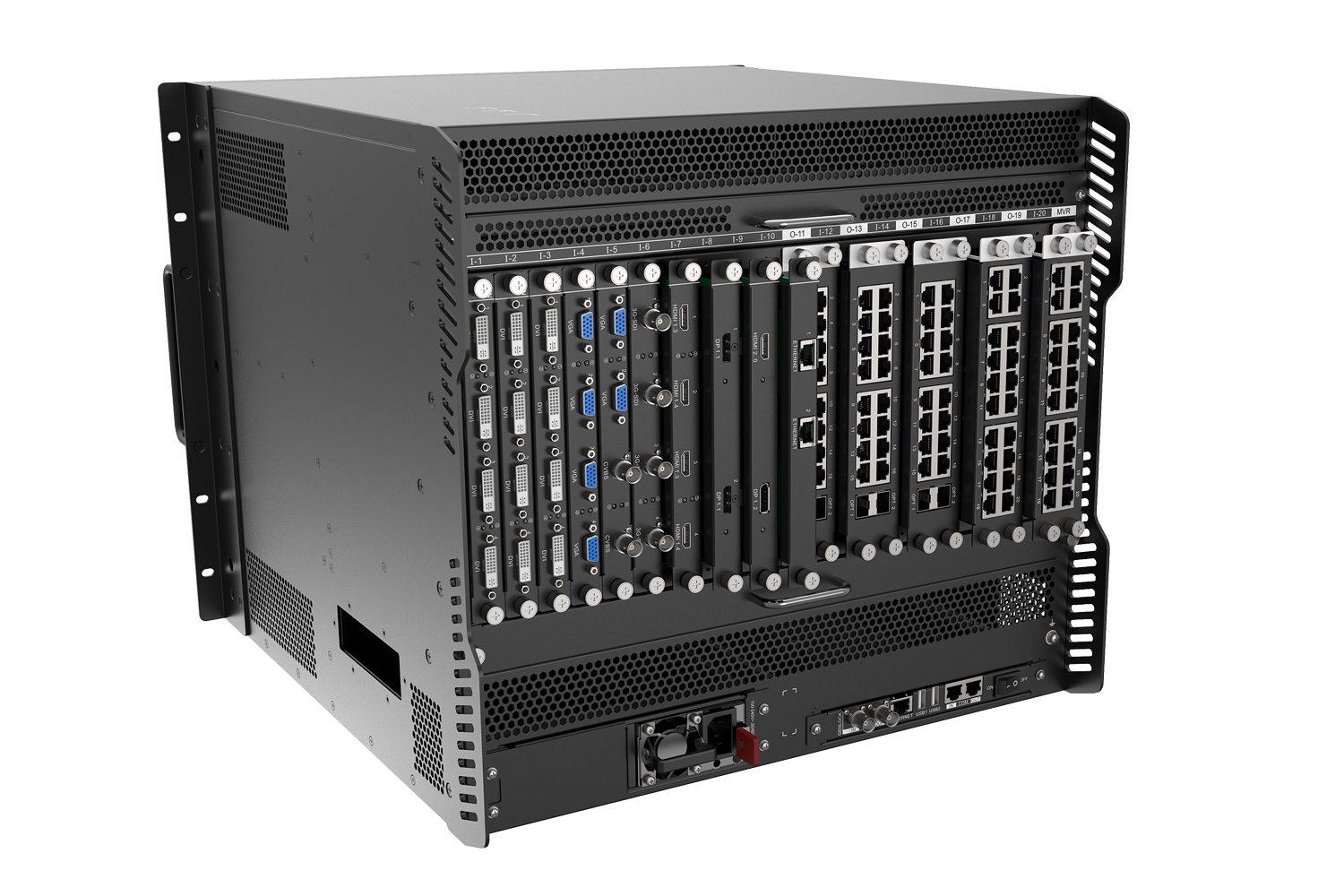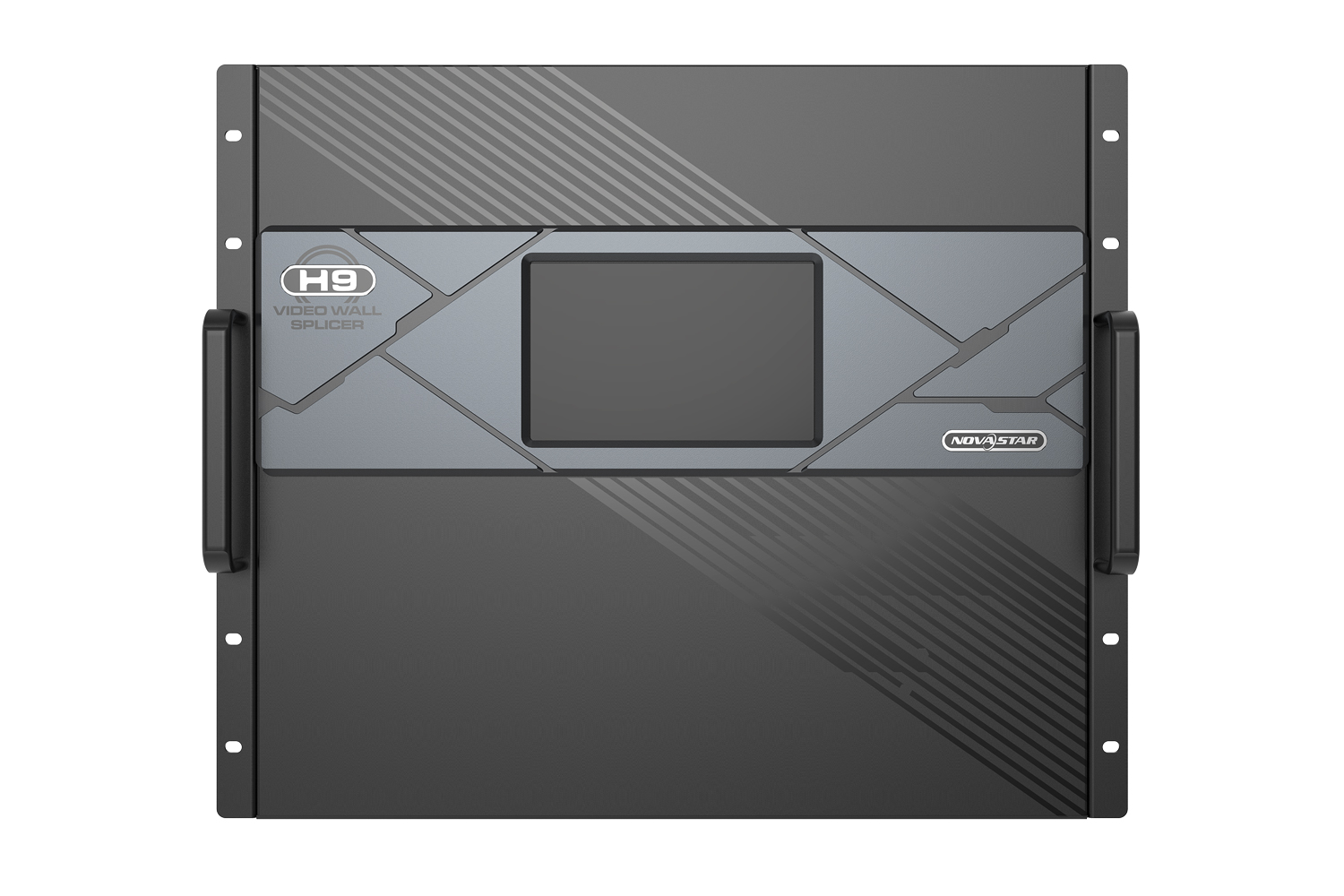Product Review by Dave Spark.
First published in CX Magazine September 2021
We have a range of NovaStar products like the MCTRL4K, 660s, VX6s and the N9 video processor, which is the earlier version of the H9 all-in-one solution. When we saw the online demos of the H Series we could see the potential for us as a business. No more mucking around with the challenges of interfacing equipment from different manufacturers. We had been looking at other manufacturers’ solutions for a long while but the return on investment was just too hard to justify. This is an affordable solution that offers a huge amount of flexibility.
We did our due diligence and made sure that the H9 would do what we needed it to. ULA Group worked closely with the NovaStar team to do some pre-testing and were happy to send us video clips demonstrating the H9 SDI deinterlacing, and answer questions about layer capacities and pre-set playbacks. All our boxes ticked, we took receipt of our H9 three months ago.
When we saw the online demos of the H Series we could see the potential for us as a business. No more mucking around with the challenges of interfacing equipment from different manufacturers.
We were excited by the layer capabilities. With other processors we have run out of layers. Not the case with the H9. With sixteen 2K layers per output card, we’ve the option for sixty-four layers with our current configuration. And they are fully mixable, no need to use fade outs. The layers can freely cross different output loading areas while keeping layer size the same. Layers can be in any position, overlapped, or unlimited scaled.
We have been loving the ease with which we can now work with and above 4K resolutions. We’ve predominantly used it at corporate events such as TRENZ 2021, Local Government NZ Conference 2021 and NZ Merino Conference, amongst others.
All required large backdrop screens around and over the 4K wide mark, lots of picture-in-picture, PowerPoint and IMAG, as well as Zoom presenters. We’ve been able to use the customised EDID settings in the H9 to be able to take inputs to higher than 4K wide with ease. We just push the actual LED screen size to the input connector and the computer can output at that specific resolution. It’s great to be able to run at native pixel sizes all the way through.
We’ve also really appreciated the all-in-one factor. The H9 uses modular mainframe connectivity to integrate splice processing and display control. We’ve driven stage confidence monitors, Live Stream sends and even Stage Manager monitors with a stage feed, an image preview and a timer in the top corner. We are no longer having to configure multiple devices for all these ins and outs, we just bring it all through the H9.
We have been loving the ease with which we can now work with and above 4K resolutions. We’ve predominantly used it at corporate events.
We have a large quantity of hi-res LED screens and the 4K and above realm has always been a real challenge in terms of time spent testing that everything will run smoothly when we need to interface with another system. With connection options of HDMI 2.0, Displayport 1.2, and 12G SDI (depending on your choice of input cards) we now have confidence in dealing with most things that will show up. In addition, the H9’s output capabilities are impressive. We’ve no concerns when sending content over multiple 4K cards. They are all synced, we can easily define a large wall as one output, and don’t have to worry about screen tearing.
Other benefits are simple but significant. The H9 processor saves space with one customisable multiview monitor giving the operator a complete overview. It enables multiple users, with a second technician able to programme pre-sets for example with remote preview over IP, whilst you run the live show. It also has a very modular set up so you can just choose to get what input and output cards you need.
And it has been easy to ‘plug and play’. I watched a couple of online demos and I was away. The user interface makes sense with the outputs and inputs laid out well. If you know your way around NovaStar products, you’ll immediately be dragging layers around no problem. Where there have been the inevitable quirks that you get with a new product, NovaStar have fixed them in the next release.
Other benefits are simple but significant. The H9 processor saves space with one customisable multiview monitor giving the operator a complete overview. It enables multiple users, with a second technician able to programme pre-sets for example with remote preview over IP, whilst you run the live show.
Garth and the team at ULA have also been a real pleasure to work with, extremely responsive and offering a fast turnaround of pricing and information. They are always happy to field a call with a query or an ‘I’m stuck’ moment, and if they don’t have an answer immediately at hand, they normally have one in the next couple of hours direct from the supplier. We’ve been really happy with the level of service we have received.
As for downsides? Minimal. Just the usual UI stuff you get with a new gadget which I am sure they’ll fix once I get the time to send through the feedback! For some businesses who are looking for a console style control, it doesn’t have the big desk interface that some users might prefer. But who knows what may be released down the track?
For some traditionalists not having a pre-set load and preview before hitting the take button may be an issue. Like me though, you may find you prefer this way of doing things.
To summarise, if you want an affordable, all-in-one video splicing processor to simplify working with high res LED systems, the NovaStar H series is your answer. And it is scalable with an H2, H5, H9 and H15 processors available in the range too.
Dave Spark is the very hands-on co-owner and director of Pixel, a Christchurch-based video solutions and production design company. With a background in lighting, Dave transitioned to video, started messing around with graphics and content creation. Over the past twenty years he has worked for several companies and on high profile events around the country, before starting Pixel five years ago.
-
NOVASTAR H9 – THE SPECS
- Chassis: 9U
- Max Loading Capacity (LED 4K Sending Card): 65 million pixels
- Max Input Cards: 15
- Max Output Cards:
5 / 10 (Enhanced model)
- Supports irregular screen configuration
- Max Layers: A single card supports
16 layers - Max Presets: 2000
- 10bit, HDR, 3D
- Redundant Power Optional






